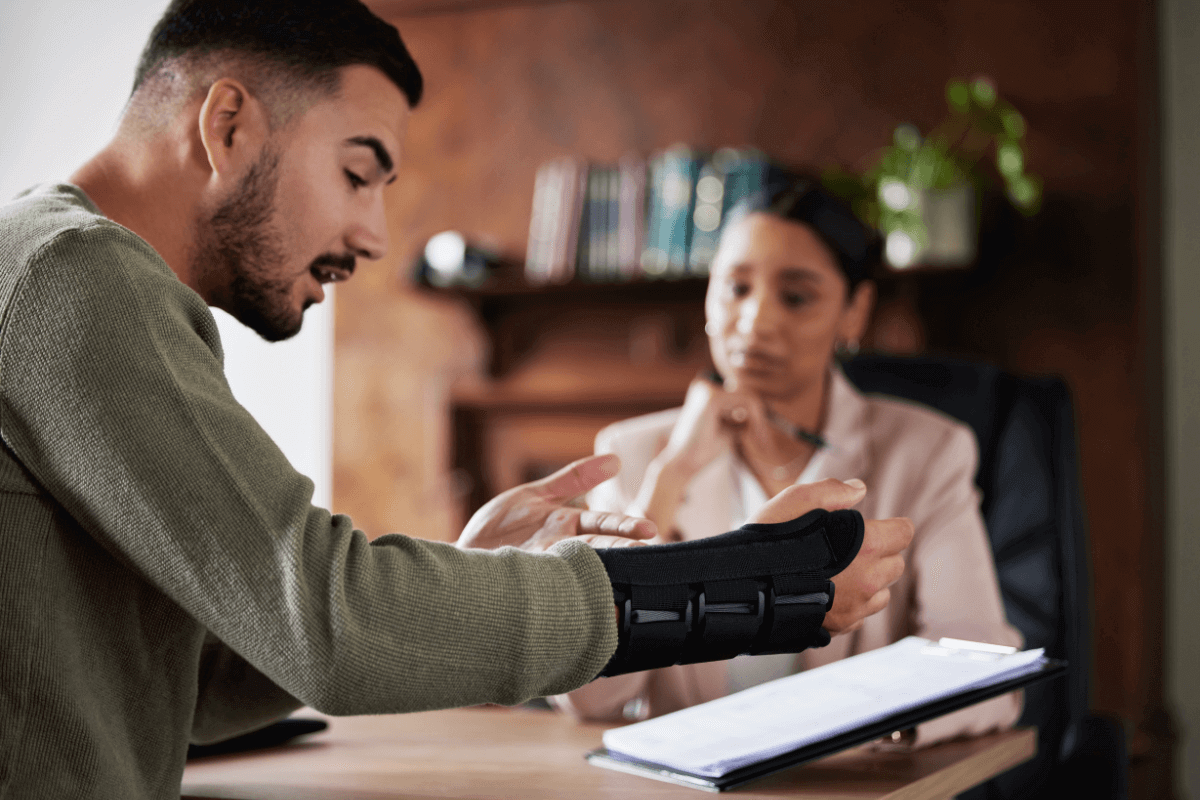
Partner at AKD Lawyers
Practice Areas: Personal Injury

Louisiana’s personal injury laws have recently undergone significant changes, reshaping how claims are handled and how compensation is determined. Understanding these updates is crucial for anyone involved in personal injury cases, whether as a claimant or a legal professional. This article breaks down the recent legislative changes, their impacts, and what you need to know to navigate these new rules effectively.
Overview of Recent Legislative Changes
Introduction to the Civil Justice Reform Act of 2020
On January 1, 2021, the Civil Justice Reform Act of 2020 came into effect, introducing notable changes to Louisiana’s personal injury laws. This reform aimed to streamline the legal process and address concerns about the handling of personal injury claims.
Understanding these changes can help you better navigate the legal landscape if you’re involved in such cases.
Lower Threshold for Jury Trials
One of the key changes under this reform is the adjustment of the threshold for jury trials. Previously, the amount in controversy needed to exceed $50,000 for a case to be tried before a jury in district courts.
The new law lowers this threshold to $10,000, excluding interest and costs. This means that more cases will now be eligible for jury trials, potentially increasing the number of trials and influencing how cases are decided.
Changes in Recovery of Medical Expenses
Another significant update involves how medical expenses are recovered in personal injury claims. The new legislation limits a plaintiff’s recovery to the amount actually paid by a collateral source, such as health insurance or Medicare, rather than the total amount billed by medical providers.
This change aims to reduce inflated damage claims and align recoveries more closely with actual costs incurred.
Admissibility of Seatbelt Use Evidence
The “Seat Belt Gag Law,” which previously prohibited defendants from introducing evidence about whether a plaintiff was wearing a seatbelt at the time of an accident, has been repealed.
This means defendants can now present seatbelt use evidence, which could affect the assessment of comparative fault and the determination of damages. This change allows for a more comprehensive evaluation of each party’s responsibility in an accident.
Disclosure of Liability Insurance in Trials
The new rules also address the disclosure of liability insurance in jury trials. Under the updated legislation, insurance coverage can only be mentioned under specific conditions. This includes when the amount of coverage is a disputed issue that the jury must decide or when it is relevant to a witness’s credibility.
These changes are designed to prevent undue influence on the jury’s decision-making process.
Impact of Recent Changes on Personal Injury Claims
Encouragement of Pre-Lawsuit Settlements
With the increased eligibility for jury trials and changes in how medical expenses are recovered, there is a greater incentive for parties to settle personal injury claims before filing a lawsuit. This shift aims to reduce the burden on the court system and expedite the resolution of cases.
Potential Increase in Jury Trials
The reduction in the threshold for jury trials could lead to a rise in the number of cases decided by juries. While this change might help ensure a more thorough examination of complex cases, it could also strain the judicial system with a higher volume of cases requiring trial.
Concerns About Low-Value Cases and Unfair Settlements
There are concerns that these changes might lead to an influx of low-value personal injury cases in district courts. Additionally, plaintiffs might feel pressured to accept less favorable settlement offers due to the altered dynamics of litigation and compensation recovery. It’s essential for claimants to seek professional legal advice to ensure they receive fair compensation.
Historical Context of Tort Reform in Louisiana
Medical Malpractice Act of 1996 and Its Expansion
Louisiana has a history of tort reform aimed at balancing the rights of victims and defendants while addressing issues such as high insurance premiums.
The Medical Malpractice Act of 1996, later expanded in 1999, set a cap on non-economic damages in medical malpractice cases at $500,000.
This cap was intended to reduce the financial burden on insurance companies but has also limited compensation for victims of medical malpractice, especially in severe cases.

Comparative Fault in Louisiana Personal Injury Cases
Definition and Application
In Louisiana, the concept of comparative fault is crucial in personal injury cases. Comparative fault means that responsibility for an accident is distributed among all involved parties based on their degree of fault. For instance, if two drivers are in an accident and one is found 70% at fault while the other is 30% at fault, compensation is adjusted accordingly.
This approach ensures that compensation reflects each party’s level of responsibility.
Example of Comparative Fault Calculation
Consider a scenario where a driver running a red light collides with another vehicle. If the second driver was also speeding, both drivers’ actions would be examined to determine their respective fault percentages. This method helps to allocate damages fairly and provides a clear picture of each party’s contribution to the accident.
Implications for Compensation
Understanding comparative fault is vital for anyone involved in a personal injury case, as it directly impacts the amount of compensation awarded. It ensures that each party bears a fair share of the responsibility and that compensation reflects their degree of fault.
Maximizing Compensation in Personal Injury Cases
Understanding Economic vs. Non-Economic Damages
Maximizing compensation in personal injury cases involves recognizing the difference between economic and non-economic damages.
- Economic Damages: These are tangible costs with a clear monetary value, such as medical bills, lost wages, and property damage. They are usually proven through receipts and bills.
- Non-Economic Damages: These cover intangible losses such as pain and suffering, emotional distress, and loss of enjoyment of life. Unlike economic damages, non-economic damages do not have a fixed price and vary from case to case.
Strategies for Maximizing Compensation
To maximize compensation, it’s important to document all economic damages thoroughly and provide evidence of non-economic damages through personal testimony and expert evaluations. Seeking legal advice can also help ensure that all potential damages are considered and accurately calculated.
Statute of Limitations for Personal Injury Claims in Louisiana
Overview of the One-Year Limitation
Louisiana law sets a one-year statute of limitations for personal injury claims. This means that individuals must file a lawsuit within one year from the date of the injury. Failing to adhere to this timeline can result in losing the right to seek legal recourse.
Importance of Timely Filing
Timely filing is crucial as it ensures that evidence remains fresh and witness memories are clear. Missing the deadline can jeopardize your ability to pursue a claim and secure compensation for damages.
Exceptions and Extensions
In some cases, the statute of limitations may be extended or tolled under certain circumstances, such as when the injured party is a minor or the injury is discovered later. Understanding these exceptions can help in making informed decisions about filing a claim.

Medical Malpractice Cases in Louisiana
Key Aspects for Victims
Medical malpractice occurs when a healthcare provider fails to meet the standard of care, resulting in harm to the patient. In Louisiana, proving medical malpractice involves demonstrating that the provider deviated from expected care standards.
Statute of Limitations for Medical Malpractice
Victims generally have one year from discovering the malpractice to file a lawsuit. It’s essential to be aware of this timeline to avoid losing the opportunity to seek justice.
Cap on Non-Economic Damages
Louisiana law imposes a cap on non-economic damages in medical malpractice cases, limiting compensation regardless of the injury’s severity. This cap affects the total amount victims can recover for pain and suffering.
Workplace Injuries: Rights and Legal Options
Workers’ Compensation Benefits
Employees who suffer workplace injuries are entitled to workers’ compensation benefits, covering medical costs and wage replacement. This system helps mitigate the financial impact of work-related injuries.
Reporting Workplace Injuries
Promptly reporting workplace injuries is crucial for claiming workers’ compensation benefits. Early reporting ensures that the injury is documented and facilitates a smoother claims process.
Third-Party Claims
If a third party, such as a manufacturer of faulty equipment, is responsible for the injury, employees may have the option to pursue legal action against that party. This can provide additional compensation beyond workers’ compensation benefits.
Conclusion
Recent changes in Louisiana’s personal injury laws have introduced significant updates that impact how claims are handled and compensation is determined. Understanding these changes is essential for navigating the legal process and ensuring fair compensation.
If you need assistance with a personal injury claim, contact Alvendia Kelly & Demarest at 504-618-1601 for a free consultation. Our team is here to help you understand your rights and navigate the complexities of personal injury law.
Categories

In 2003, after being dissatisfied with the quality of legal care for victims of car accidents, Roderick ‘Rico’ Alvendia sought to establish a new firm focused on providing high-quality legal services to aid injured victims and their families. J. Bart Kelly, sharing Rico’s passion for upholding justice, joined the firm later that year, and established a partnership.






